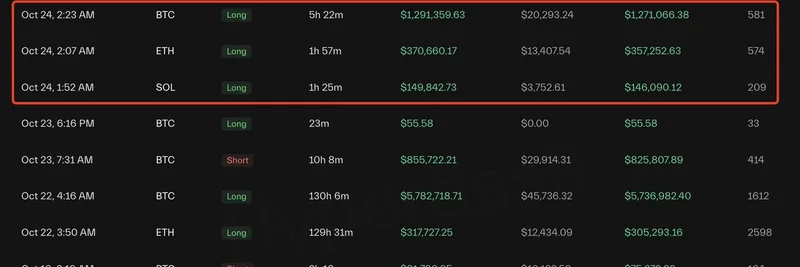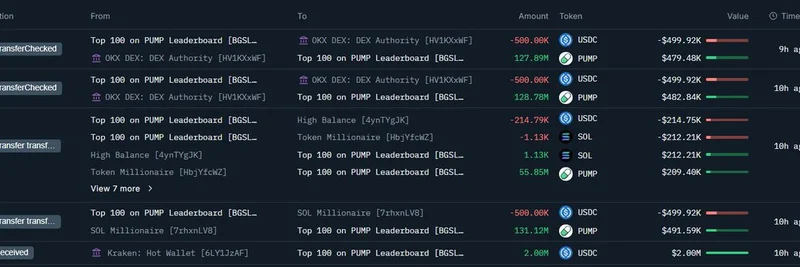Unpacking the AI Doom Cycle with Alex Good
Hey there, meme enthusiasts and crypto watchers! If you're deep into the world of blockchain and meme tokens, you've probably heard whispers about big-picture economic shifts that could rock our digital playground. Recently, a clip from ThreadGuy Live featuring Alex Good (@goodalexander) has been making waves, diving into what he calls the "AI Doom Cycle." This isn't just tech jargon—it's a theory about how AI's rapid growth could spiral into economic chaos, including a potential US sovereign debt crisis. Let's break it down in simple terms and see how it ties into meme coins.
The clip, shared by CounterParty TV (original tweet), shows Alex Good chatting with host @notthreadguy. In it, Alex paints a pretty intense picture of what might happen if the US debt market hits a wall. We're talking about scenarios where the government steps in big time to avoid total meltdown.
What Happens in a Sovereign Debt Crisis?
First off, what's a sovereign debt crisis? It's when a country like the US struggles to pay back its massive debts—think trillions in bonds and loans. Alex suggests we're already in tricky territory where debt starts to "matter" more than ever. If things go south, our usual market rules could fly out the window.
Here's the scary part: Alex predicts extreme measures like:
- Making gold illegal: Governments might ban private gold ownership to control money flows, just like in historical crises.
- Halting stock markets: Trading could be paused to prevent panic selling, similar to what happened in Nazi Germany (yikes, historical reference alert).
- Full-scale bond market intervention: The feds could buy up bonds to stabilize prices.
- Crazy amounts of quantitative easing (QE): That's when central banks print money like there's no tomorrow to pump liquidity into the economy.
Alex even mentions that when markets reopen after such halts, assets could lose 50-75% of their purchasing power. Ouch—that's inflation on steroids.
This ties back to his broader "Doom Thesis," where AI scaling creates a feedback loop: AI companies burn cash on data centers, governments subsidize them for power (like nuclear), and it all fuels more debt. But pretending "doom" isn't real keeps the subsidies flowing, leading to a productivity "larp" (live-action role-play, meaning faking it).
How Does This Affect Meme Tokens?
Now, for the meme coin crowd—this isn't just macro econ babble. Meme tokens thrive on hype, community, and risk-taking in the crypto ecosystem. In a debt crisis:
- Crypto as a hedge: If gold gets banned, Bitcoin and other cryptos could become the new "digital gold." Meme coins, being volatile and fun, might see surges as people seek alternatives to traditional assets.
- Hyper-gambling economy: Alex describes a "distraction hyper gambling economy" where AI siphons money into training loops. Meme tokens fit right in—think pump-and-dump fun that could explode during uncertainty.
- Market halts and QE: Stock halts might push liquidity into crypto, boosting meme coin volumes. But massive QE could inflate everything, making your gains feel less real due to dollar devaluation.
- Blockchain resilience: Unlike centralized markets, blockchain runs 24/7. Meme tokens on decentralized networks could become safe havens (or wild rides) when traditional finance freezes.
Of course, risks abound. If equities crash, crypto often follows in the short term. But long-term, this "doom cycle" could accelerate adoption of decentralized finance (DeFi) and meme-driven projects as people lose faith in fiat systems.
Alex Good's Broader Doom Thesis
For context, Alex's Doom Thesis isn't new—he's been ranting about it for months. It includes phases like:
- Phase 1: AI slop (low-quality output) funds data centers, now kinda mainstream.
- Phase 2: AI firms fake productivity to snag subsidies, ignoring real doom risks.
He also warns of "The Big Rug," where enterprises using AI tools unknowingly leak IP, leading to AI agents obsoleting whole industries. Unemployment spikes, rates drop, and non-AI stocks tank. For crypto folks, this means pivoting to "existential dread" plays—tokens tied to AI resistance or decentralized alternatives.
In one post, Alex quips about the economy being "perfectly designed for AI systems to syphon money out of to pay for their own training in an infinite loop." Sounds like a meme coin narrative waiting to happen!
Why This Matters for Blockchain Practitioners
At Meme Insider, we're all about helping you navigate the meme token world with the latest insights. Alex's take highlights how AI and macro events could supercharge (or derail) blockchain innovation. If debt crises push more folks into crypto, meme tokens could lead the charge in community-driven value creation.
Keep an eye on projects that hedge against inflation or centralization—like those building on AI-resistant tech or fun, viral narratives. And remember, this is speculative—do your own research!
What do you think? Will the AI Doom Cycle pump your favorite meme coin or send it to zero? Drop your thoughts in the comments.



